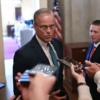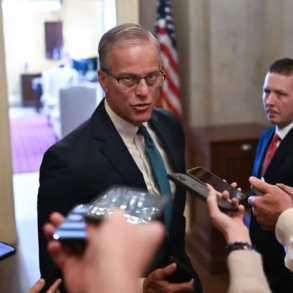On April 19, 2025, a glimmer of hope flickered in the ongoing Russia-Ukraine conflict as both nations executed their largest prisoner-of-war exchange since the war began over three years ago. This significant event, coupled with Russian President Vladimir Putin’s announcement of a temporary Easter ceasefire, marked a rare moment of diplomacy in a conflict that has claimed countless lives and displaced millions. While the ceasefire was met with skepticism and accusations of violations, the prisoner swap offered a tangible step toward reconciliation, raising questions about the potential for peace in a war-torn region.
A Historic Exchange
The prisoner swap saw each side release 246 prisoners, totaling nearly 500 individuals reunited with their families. Brokered by the United Arab Emirates, the exchange was a logistical and emotional milestone. Videos captured by RFE/RL’s Ukrainian Service showed tearful reunions, with freed prisoners embracing loved ones after years of captivity. For many, this was a moment of joy in a conflict that has brought relentless suffering. The Russian Ministry of Defense described the release as a “gesture of goodwill,” a rare acknowledgment of humanity in a war defined by aggression.
This exchange was not just about numbers; it symbolized a fleeting willingness to negotiate. Each prisoner returned home represented a family reunited, a story of survival, and a reminder that even in war, compassion can find a way. However, the sheer scale of the swap—hundreds on each side—underscored the war’s brutality, with thousands still held captive on both sides.
Putin’s Easter Ceasefire: Promise or Ploy?
Coinciding with the prisoner exchange, Putin announced a temporary Easter truce, set to begin at 6:00 PM on April 19 and last until midnight on April 21. The Kremlin framed it as a gesture to honor the Orthodox Christian holiday, a significant cultural moment for both Russians and Ukrainians. Yet, the ceasefire quickly became a point of contention. Ukrainian President Volodymyr Zelenskyy dismissed it as hollow, reporting 59 instances of Russian shelling and five assaults during the supposed truce. Russia, in turn, accused Ukraine of launching hundreds of attacks, claiming the ceasefire was violated almost immediately.
The skepticism was palpable. Zelenskyy pointed to ongoing air raid alerts across Ukraine, suggesting that Putin’s announcement was more about optics than genuine peace. Posts on X echoed this sentiment, with some users questioning whether the ceasefire was a publicity stunt to gain “brownie points” rather than a sincere effort. Others saw progress, noting that the prisoner swap only happened after the U.S. threatened to withdraw from peace talks, hinting at external pressure driving these developments.
A Fragile Step Toward Peace?
The prisoner swap and ceasefire announcement occurred against a backdrop of stalled peace negotiations. The U.S., under President Donald Trump, has pushed for a resolution, with Secretary of State Marco Rubio warning that peace efforts would be abandoned if no progress was made soon. Talks in Saudi Arabia recently led to a 30-day ceasefire agreement, but the Easter truce’s failure to hold casts doubt on the durability of such deals. Both sides remain entrenched, with Russia retaking territory in the Kursk region and Ukraine bolstered by resumed U.S. military aid.
Despite the setbacks, the prisoner exchange offers a sliver of hope. The fact that both nations, mediated by a neutral third party, could coordinate such a large-scale swap suggests that diplomacy is not entirely dead. The emotional reunions broadcast worldwide humanized the conflict, reminding the global community of the individuals caught in the crossfire. Yet, the ceasefire’s collapse highlights the fragility of trust between Russia and Ukraine, where mutual accusations of bad faith continue to undermine progress.
What Lies Ahead?
The events of April 19, 2025, encapsulate the paradox of the Russia-Ukraine war: moments of humanity intertwined with persistent hostility. The prisoner swap was a triumph of negotiation, but the ceasefire’s failure underscores the deep mistrust that fuels the conflict. As families celebrate the return of their loved ones, the broader war rages on, with no clear end in sight.
For now, the world watches cautiously. Will this exchange pave the way for more diplomacy, or was it a fleeting anomaly in a relentless war? The answer depends on whether leaders can build on this moment, prioritizing human lives over territorial gains. For the nearly 500 prisoners who returned home, the swap was a miracle. For the millions still affected by the war, it’s a reminder that peace, though elusive, is worth pursuing.








